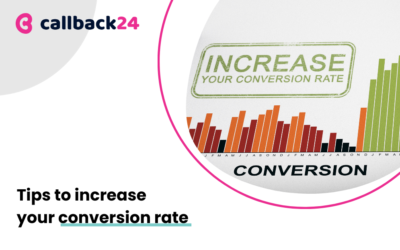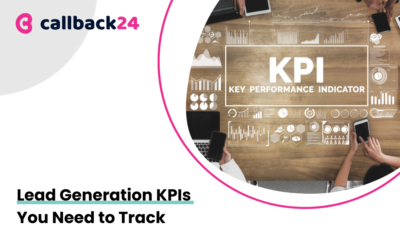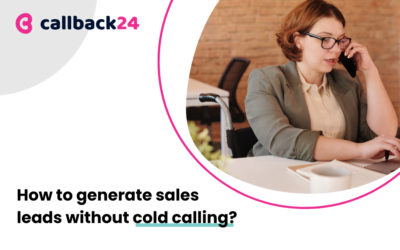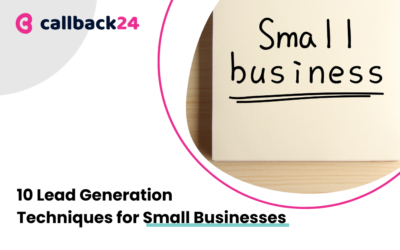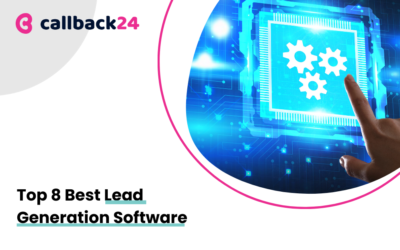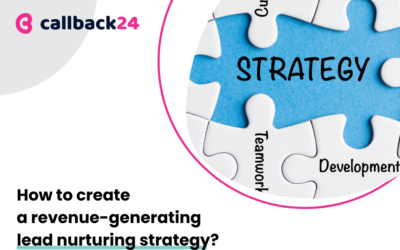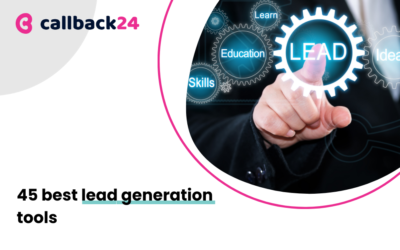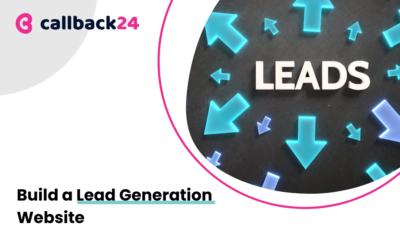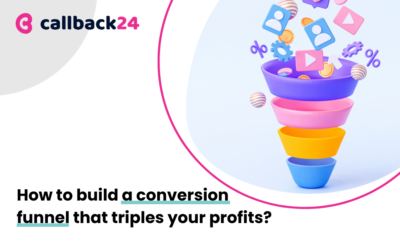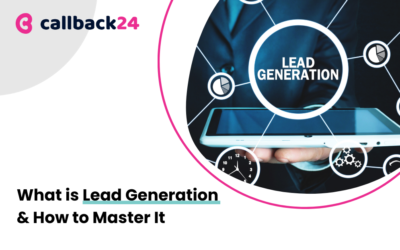TL;DR
- A lead is a potential customer who has expressed interest in your product or service. There are three types of leads: Marketing Qualified Leads (MQLs), Service Qualified Leads (SQLs), and Product Qualified Leads (PQLs).
- Lead generation is the process of generating leads through marketing activities such as advertising, website visits, or trade show attendance.
- To generate leads, you need to understand your buyer personas—the types of people who are interested in your product or service. Once you know your buyer personas, you can create targeted marketing messages that resonate with them.
- B2B lead generation is the process of generating leads or potential customers for a business’s products or services. It is based on the work of sales and marketing teams which are creating good lead generation strategies.
- The most important part of creating B2B lead generation strategies is to ensure that the leads are qualified, meaning they are interested in what you have to offer and are likely to convert into paying customers. There are a number of ways to qualify leads, but some common methods include online surveys, free trials, and content downloads.
- Retargeting is a powerful marketing tool that helps you reach potential customers who have already shown an interest in your product or service.
- Building a strong online community is key to B2B lead generation and sales success. If you’re looking to expand your online presence and generate more leads, focus on creating quality content that is optimized for search engines. Create evergreen content that is accurate, up-to-date, clear, and concise.
- By personalizing your sales funnel, you can attract high quality leads that are more likely to convert.
- You should try our solution for lead generation – Callback24. It is a phone call based system on your website which allows you to quickly call interested customers back and turn them into leads.
What is a lead?
A lead is a potential customer who has expressed interest in your product or service. Lead generation is the process of generating leads through marketing activities such as advertising, website visits, or trade show attendance.
To generate leads, you need to understand your buyer personas—the types of people who are interested in your product or service. Once you know your buyer personas, you can create targeted marketing messages that resonate with them.
Marketing Qualified Lead (MQL)
A Marketing Qualified Lead (MQL) is a lead that has been identified as having a higher-than-average likelihood of becoming a paying customer. MQLs are typically generated through marketing activities such as website visits, whitepaper downloads, or webinar registrations.
Organizations use MQLs as a way to gauge the effectiveness of their marketing programs and to prioritize leads for follow-up by sales teams. By definition, an MQL is not yet ready to buy, but it is considered warmer than a general suspect or prospect.
Service Qualified Lead (SQL)
A Service Qualified Lead (SQL) is a lead that has been determined to be ready and willing to receive services from a company. This type of lead is often generated through marketing efforts such as online advertisements, search engine optimization, or lead capture forms on a company’s website.
Service qualified leads are often pre-screened by a company’s sales or marketing department before being passed on to the service team. This ensures that only leads that are likely to result in service revenue are sent to the service department, saving time and resources.
SQLs can be an important source of revenue for companies that offer services. By generating and nurturing SQLs, companies can ensure that their service team is working on leads that are most likely to result in closed deals.
Product Qualified Lead (PQL)
A Product Qualified Lead (PQL) is a lead that has been determined to be qualified by a company’s product team. PQLs are generally generated through marketing activities, such as online quizzes or free trials, and have shown interest in a company’s product.
PQLs are important because they help companies focus their resources on leads that are most likely to convert into customers. By definition, a PQL is interested in your product and has already taken steps to learn more about it. This makes PQLs much more valuable than MQLs or SQLs, and thus worth investing more time and resources into.
How to generate PQLs?
The best way to generate PQLs is through marketing activities that target people who are already interested in your product or industry. For example, if you sell software that helps businesses manage their finances, you might create an online quiz about financial literacy or offer a free trial of your software.
These activities will help you generate leads that are interested in your product and have the potential to become customers. Investing in PQL generation will pay off in the long run by helping you focus your resources on the leads that are most likely to convert.
Why PQLs are important?
PQLs are important because they:
- Help companies focus their resources
- Are more valuable than MQLs or SQLs
- Are interested in a company’s product
- Have already taken steps to learn more about it
The best way to generate PQLs is through marketing activities that target people who are already interested in your product or industry.
For example, if you sell software that helps businesses manage their finances, you might create an online quiz about financial literacy or offer a free trial of your software.
What is lead generation?
Lead generation is the process of attracting and converting strangers into leads, typically for the sales or marketing team. The lead generation process usually begins with creating content that draws attention to your product or service. Once you have a potential customer’s attention, you need to funnel them through your sales process until they eventually make a purchase.
Why do you need lead generation?
Lead generation is the process of identifying potential leads and nurturing them till they are ready to purchase your product or service. A lead generation campaign can be a great way to increase sales and grow your business.
There are a number of ways to lead generation, including advertising, social media, and email marketing. However, not all leads are created equal. Some leads may be more interested in your product than others, and some may be ready to buy right away. It’s important to identify potential leads and nurture them until they are ready to purchase.
Lead generation is a crucial part of any successful business. By generating potential leads and nurturing them, you can increase sales and grow your business.
How does B2B lead generation work?
B2B lead generation is the process of generating leads or potential customers for a business’s products or services. It is based on the work of sales and marketing teams which are creating good lead generation strategies. B2B lead generation can be done through online channels, such as a website or blog, or offline channels, such as print advertisements or word-of-mouth.
The most important part of creating B2B lead generation strategies is to ensure that the leads are qualified, meaning they are interested in what you have to offer and are likely to convert into paying customers. There are a number of ways to qualify leads, but some common methods include online surveys, free trials, and content downloads.
Once you have generated a list of qualified leads, it’s time to start marketing to them. This can be done through a variety of means, such as email marketing, social media, or even direct sales. The key is to find the method that works best for your business and your lead list.
B2B lead generation strategies are only half the battle – you also need to convert those leads into paying customers. This can be done through a variety of means, such as providing a great product or service, offering competitive pricing, or creating a seamless customer experience.
The most important thing to remember is that B2B lead generation is a process, not a one-time event. By continuously generating and marketing to leads, you can keep your pipeline full of potential customers, ensuring that your business always has a steady stream of new business.
The importance of data in B2B lead generation
The importance of data in B2B lead generation cannot be understated. In order to lead generation, businesses need data about their target audience. This data can come from a variety of sources, including market research, customer surveys, and even social media.
When it comes to lead generation, the more data a business has, the better. This B2B lead generation data can be used to create targeted marketing campaigns, identify potential customers, and track the performance of B2B lead generation efforts.
Data is also important for measuring the success of B2B lead generation campaigns. By tracking the number of leads generated, businesses can gauge the effectiveness of their marketing efforts and make necessary adjustments.
Lead generation is a critical part of any business, and data plays a vital role in making it successful. Businesses that invest in data-driven B2B lead generation are more likely to see success than those that don’t.
How to make the best B2B lead generation?
Turn Up Your Retargeting
Are you looking to increase sales and improve B2B lead generation? If so, then you need to turn up your retargeting! Retargeting is a powerful marketing tool that helps you reach potential customers who have already shown an interest in your product or service. By increasing your retargeting efforts, you can reach more people for lead generation, close more sales, and boost your bottom line. Here’s how to get started:
- Define your sales process
First, you need to clearly define your sales process. What are the steps that potential customers need to take in order to buy from you? By understanding your sales process, you can tailor your retargeting efforts to each stage. For example, if someone has visited your website but hasn’t added anything to their cart, you know that they’re in the awareness stage. In this case, you would want to target them with ads that highlight your product or service.
- Identify your potential customers
Next, you need to identify your potential customers. Who are the people most likely to buy from you? Consider factors like age, gender, location, and interests when determining who your target audience is. Once you’ve identified your target audience, you can start creating targeted retargeting campaigns.
- Create targeted retargeting campaigns
Now it’s time to create your retargeting campaigns! When crafting your ads, be sure to keep your target audience in mind. What kind of messaging will resonate with them? What kind of offer will entice them to buy from you? By creating targeted campaigns, you can increase the likelihood of conversion and boost sales.
- Measure your results
Finally, don’t forget to measure your results. Keep track of your click-through rate (CTR), conversion rate, and sales numbers. This data will help you determine whether or not your retargeting efforts are paying off. If you’re not seeing the results you want, then make the necessary adjustments to your campaigns.
Personalize social media interaction & build community
Building a strong online community is key to B2B lead generation and sales success. By personalizing social media interactions and providing valuable content, your marketing and sales teams can build a strong community of customers and followers who are more likely to buy from you. Content marketing is essential for creating a connection with potential buyers and building trust. When done correctly, it can lead to increased sales and boosted B2B lead generation.
Some B2B lead generation strategies that your business can use to build a social media community include:
- Creating valuable content that appeals to your target audience. This could include blog posts, infographics, video tutorials, or helpful articles.
- Sharing this content across your social media channels and encouraging others to share it as well.
- Responding to comments and questions from potential customers. This helps create a connection and builds trust.
- Hosting webinars or other events that would be of interest to your target audience. These events can help generate leads and sales while also building a strong online community.
By personalizing social media interactions and providing valuable content, you can build a strong community of customers and followers who are more likely to buy from you. B2B lead generation strategies that focus on content marketing can be highly effective in boosting sales and generating leads.
Expand your online presence
If you’re looking to expand your online presence and lead generation for your sales and marketing teams, you need to focus on expanding your online presence. By creating quality content that is optimized for search engines, you can attract more visitors to your website and convert them into leads.
Sales and marketing teams are always looking for ways to lead generation. Having an online presence is a great way to reach potential customers. By creating a website, you can showcase your products or services and reach a wider audience.
If you don’t have a website, now is the time to create one. You don’t need to be a tech expert to get started. There are plenty of easy-to-use website builders that can help you get online quickly and easily. Once you have a website, you can start promoting it through social media and other channels.
Personalize more touchpoints
By personalizing your sales funnel, you can attract high-quality leads that are more likely to convert. By providing B2B lead generation targeted content that speaks to their specific needs, you can nurture them through the buyer’s journey and increase your chances of making a sale.
So how can you go about personalizing each B2B lead generation touch point? Here are a few ideas:
- Give visitors to your website the option to sign up for your newsletter or other content. This way, you can continue the conversation with them even after they leave your site.
- Use lead capture forms that are specific to each lead source. For example, if you’re running a Facebook ad campaign, use a lead capture form that includes the ad copy or offer so that you can track the effectiveness of the campaign.
- Send targeted emails to leads based on their interactions with your brand. If someone visited your website but didn’t sign up for your newsletter, send them an email with information about your products or services.
- Personalize your follow-up communication. When reaching out to a lead, make sure to mention something that you talked about or that they showed interest in. This will help build rapport and further the relationship.
Create high-quality, evergreen content
Evercontent is designed to be useful in B2B lead generation and relevant over a long period of time, making it a valuable resource for your audience.
There are a few things to keep in mind when creating evergreen content for B2B lead generation:
- Make sure the information is accurate and up-to-date.
- Write in a clear and concise style.
- Use images, infographics, and other visuals to break up the text and add interest.
If you can create content that meets these criteria, you’ll have a valuable B2B lead generation tool that will continue to pay off for years to come.
One of the best places to promote your evergreen content is on social media. As a B2B lead generation strategy, it allows you to reach a large audience with minimal effort. Plus, you can use social media platforms to create targeted ad campaigns that drive traffic directly to your content.
When using social media marketing for B2B lead generation, it’s important to keep a few things in mind:
- Use images and videos to grab attention.
- Keep your posts short and sweet.
- Use hashtags and other tools to reach a wider audience.
- Promote your content regularly.
Use Callback24
You should try our solution for lead generation – Callback24. It is a phone call based system on your website which allows you to quickly call interested customers back and turn them into leads. Callback24 will increase your sales calls and show customers that they didn’t need to wait for a call. The tool provides extensive and detailed reports and statistics on incoming, outgoing, and callback calls. The tool can be integrated with Google Analytics, Facebook Lead Ads, your CRM, and many others.
Summary
B2B lead generation is important for your business to convert potential customers into thriving leads. We hope that from this article you will now know how it can improve your business and you can implement the best strategy in your company.



